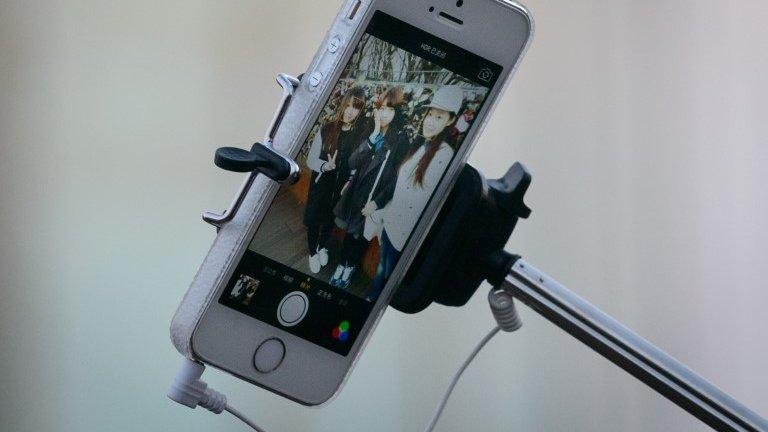The National Gallery in London bans selfie sticks
- Published
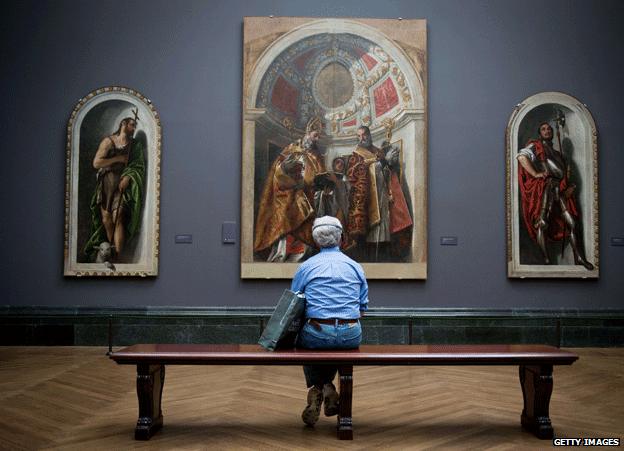
The National Gallery has banned the selfie stick in order to preserve the 'overall visitor experience'
The National Gallery in London has banned selfie sticks.
The gallery says it has placed them in the same category as tripods, which are banned "in order to protect paintings, individual privacy and the overall visitor experience".
The National Gallery ban follows other galleries around the world, including the Smithsonian museums in Washington.
The selfie stick is an elongated pole on which a camera or mobile phone can be attached to take a better photo.
Sales of the selfie stick have soared since last year and they are now a common sight at tourist sites.
The ban by the National Gallery was welcomed by art critic Brian Sewell. He told , externalThe Times: "They are possibly quite dangerous to the art work and cause appalling crowding around a painting.
"Anyone who actually wants to go and see a painting can't because people are too busy taking photos. I've seen things in the National Gallery which make my hair stand on end."

Selfie sticks are expanding poles that allow you to hold your smart phone or camera at a distance in order to get a wider picture of yourself and whatever is behind you
Some visitors at the National Gallery have backed the ban.
Morny Davison told the Press Association the selfie stick was "an interference in what one hopes is a reasonably calm experience looking at great pictures."
Another visitor said art lovers would be "thrilled" by the ban, adding: "They should have been banned some time ago."
Other British institutions could also follow the ban.
The British Museum has confirmed it is reviewing its policy on selfie sticks.
A spokeswoman said: "The safety of objects and visitors is paramount to the British Museum".
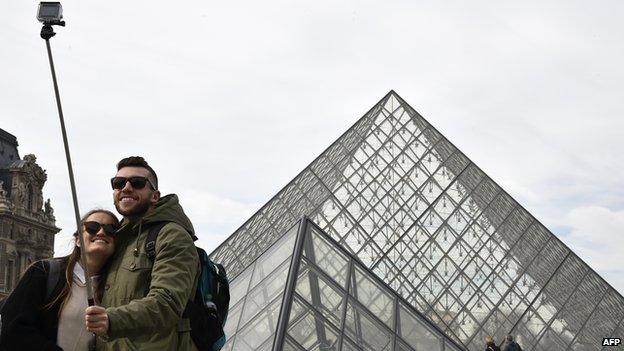
Tourists use a selfie stick outside The Louvre in Paris, which is expected to follow Versailles and ban the selfie stick from inside the building
Selfie sticks are currently allowed at the National Portrait Gallery, but a spokesman said "anything that may prove disruptive is reviewed on an ongoing basis.".
"It is important that all our visitors enjoy their experience at the Gallery."
The Tate does still allow the use of selfie sticks "provided that users respect fellow visitors and adhere to Tate's photography policy".
Brenda Emmanus reports on why the National Gallery is against selfie sticks
A spokesman for the Natural History Museum said it does not currently ban the use of selfie sticks and "do not currently see a need to alter our stance on this issue".
The National Museum Cardiff does not permit any camera extension devices such as tripods, and it classes selfie sticks under this category.
A spokesperson said the policy was in place "to ensure the safety of our visitors and the museum's collections, especially during crowded conditions.
"We encourage museum visitors to take selfies and share their experiences but leave the selfie sticks at home."
The BBC is awaiting confirmation from the National Galleries of Scotland to what their policy is.

Analysis by Will Gompertz, Arts Editor
It used to be so easy.
Cameras were banned - flashlight was bad for the pictures and visitors having their own copies of paintings was bad for business.
The camera phone changed all that - making it unfeasible for galleries to stop people taking photographs.
The selfie stick has introduced a new problem, which is to stop people looking at pictures and in so doing creates a distraction for those who are trying to study what the gallery has to offer. So the rationale for banning them is because they cause a disturbance - the side benefit being you will now once again have to go the museum shop to get your copy of your favourite picture.

Earlier this month, the Smithsonian museum group announced it had banned selfie sticks from its 19 museums and galleries in the US capital.
"This is a preventive measure to protect visitors and objects, especially during crowded conditions," it said in a statement.
It followed similar restrictions from museums and galleries in the US including New York's Metropolitan Museum of Art and Modern Museum of Art (MOMA), the Getty Center in Los Angeles and the Cleveland Museum of Art.
The palace of Versailles was the first museum in Europe to ban the use of selfie sticks and it is expected that The Louvre and the Pompidou centre are likely to follow suit.
Selfie sticks are also banned from music venues in the UK including the O2 and Wembley Arena.
- Published5 March 2015

- Published7 January 2015
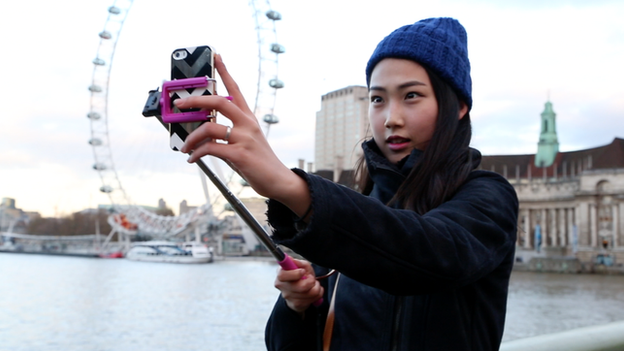
- Published8 January 2015

- Published16 May 2015
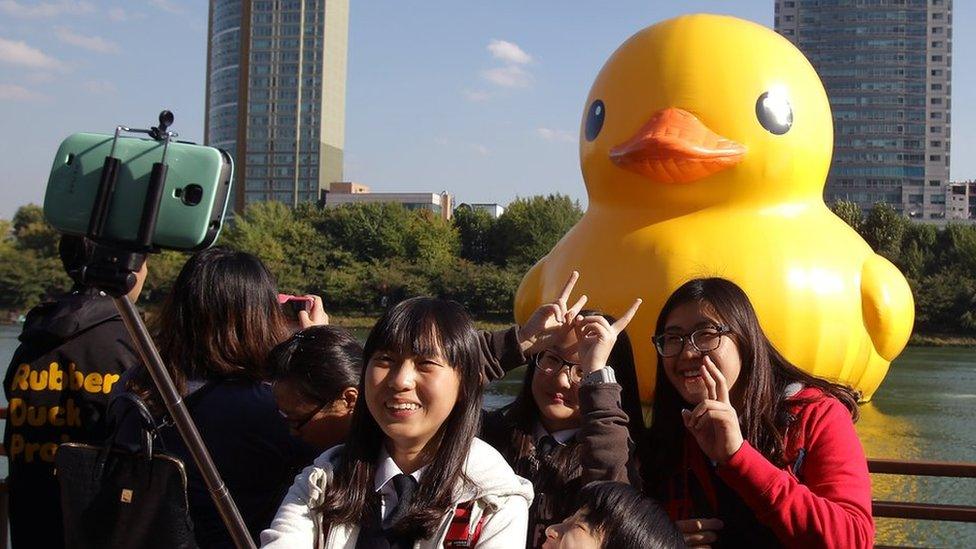
- Published1 December 2014
